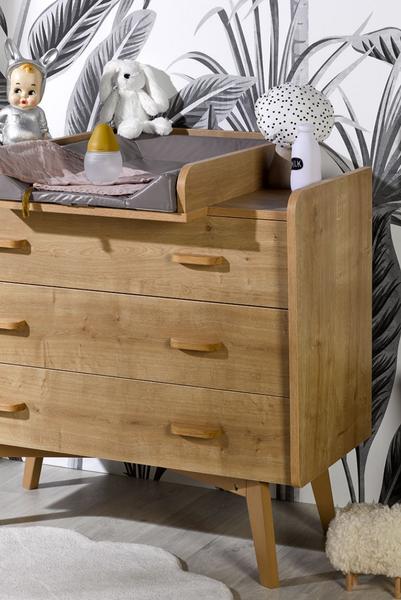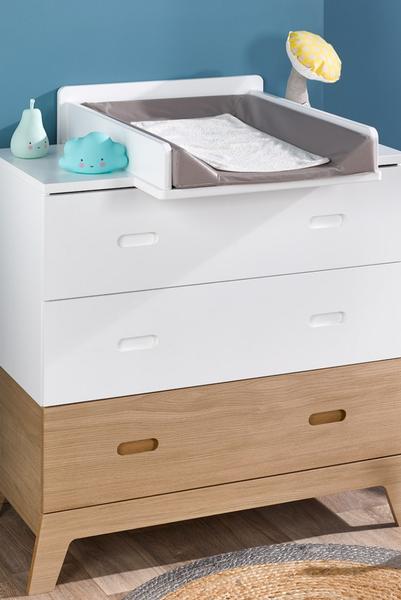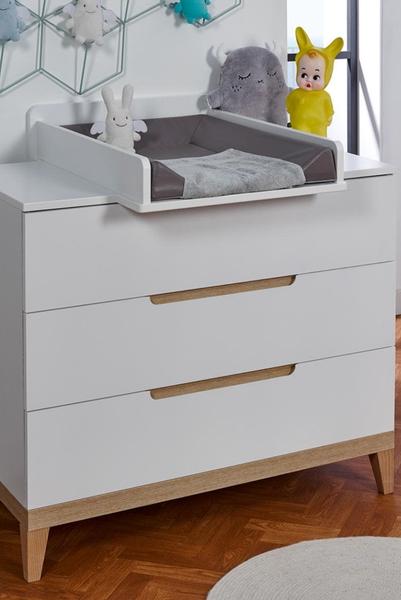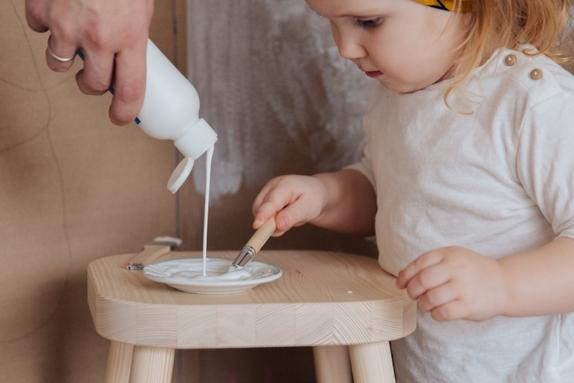The wooden changing dresser, a must-have for the baby's room
Categories:
Baby's Room
 Choosing the right baby blanket dimensions according to season and age
Choosing the right baby blanket dimensions according to season and age
 How to attach a headboard (with or without drilling): quick and effective soluti
How to attach a headboard (with or without drilling): quick and effective soluti
 Waterproof sheet or mattress protector: the best solution by age group
Waterproof sheet or mattress protector: the best solution by age group
 27 Original, Useful, and Trendy Christmas Ideas for Teens 2025
27 Original, Useful, and Trendy Christmas Ideas for Teens 2025
 Christmas Activities for Baby: Creative Ideas for Home & Daycare
Christmas Activities for Baby: Creative Ideas for Home & Daycare
The wooden changing dresser is both a practical and elegant piece of furniture that will fit perfectly in the baby's room. Wood, a natural and warm material, will bring a touch of softness and serenity to the room. Moreover, the wooden changing dresser is very durable and can be used for many years.
The changing dresser is a multipurpose piece of furniture that is essential for your baby's first years of life. During the first weeks, you may use it up to 10 times a day. You understand why your wooden changing dresser must be both durable and practical. Several criteria come into play when choosing one.

If you opt for a wooden changing dresser, it will also serve as a storage unit, which naturally places it in the child's room, or in the bathroom if it's large enough. This is different from a wall-mounted changing table, in the bathroom for example, or a changing pad that you can move as you wish, to place on any furniture with a top surface at a good height that allows fixing (and strong enough to support the child's weight of course). Note that some light wooden changing dressers are mounted on wheels, allowing you to move them easily.
If possible, install your wooden changing dresser near a water source. If not, you should be able to place a small basin on its shelf or on an adjacent support.
You will therefore select the wooden changing dresser whose dimensions best match the size and layout of the baby's room or bathroom.
The advantage of a wooden changing dresser compared to a changing table or changing pad is that it offers storage space for your child's clothes and accessories.
When changing your baby, it is crucial that you don't lose sight of them and always maintain contact, to prevent any risk of falling. You shouldn't have to contort yourself or move away to reach care products, water, and clean diapers.
Your wooden changing dresser should be designed so that the changing surface is fixed and you have a space to place some care products. The drawers allow you to keep everything you need within reach. The dresser can also have open shelves, which provide easier access to your accessories and changes. It's up to you to think about how you'll organize yourself.
The bottom drawers or cabinets are reserved for accessories other than those for changing and grooming: clothes, sheets, toys, books, etc.


The height of the wooden changing dresser is a detail too often forgotten yet is of crucial importance. The classic height is between 80 and 100 centimeters. However, 20 centimeters difference makes a big impact. If the height isn't adapted to your size and you adopt an uncomfortable position, you risk serious back problems, especially in the lower back. Since lumbago is incompatible with caring for your baby, better take precautions!
Before buying your wooden changing dresser, test at home according to its height. You must find the best compromise if several people will use it regularly (father, mother, nanny, grandparents...) and their heights differ.
The final criteria for selecting your wooden changing dresser concern its design and colors. Your future furniture should blend harmoniously with your decoration. You have a wide choice of soft colors, which help create a peaceful atmosphere in your baby's room.
Wood is a noble, traditional material for manufacturing our furniture. It has all the advantages: it's warm, pleasant to touch, durable, and aesthetic. Furthermore, wood poses no health risks and causes no allergies, unlike synthetic materials whose emissions can be harmful.
It's important to choose a manufacturer who works in respect of the environment and uses wood from eco-managed forests. This ensures that harvested wood is replaced by sufficient plantations to renew available stock and not contribute to global deforestation.
When selecting your wooden changing dresser, you must ensure that the paint used contains natural pigments. Water-based paint is the most ecological. Finally, it should not contain solvents. This way, you avoid any health risks and allergies due to toxic emissions from chemical products.
France has a significant forestry industry. Choosing French wood supports our foresters and stimulates our economy. It also avoids bringing wood from the other side of the world on extremely polluting cargo ships.
Choose French manufacturing. This also contributes to our economy and creates employment in our country. You also have the assurance of excellent quality manufacturing.

The baby dresser can be separable from the changing pad. In this case, you must ensure that both elements are compatible. Generally, manufacturers provide kits that guarantee a custom-made fixing for the changing pad. When you no longer need to change your child, you can remove the changing pad and have a classic dresser.
The changing pad should never be simply placed on the dresser, it must be fixed, using screws for example. This way, it cannot move or worse, tip over.
Like the changing dresser, the best material for the changing pad is French wood, sourced from sustainable development and painted with solvent-free materials.
Check that the size is standard, which allows you to easily find the matching small mattress. Pay particular attention to how you will attach it to the support you plan to use. Stability ensures safety. Your baby should be able to wiggle without the pad moving, and you should be able to turn and flip your baby without problems to clean them properly before changing.
Take your time to choose your wooden changing pad or dresser carefully, as you'll be using it intensively! It's about the safety and well-being of both your baby and yourself.
